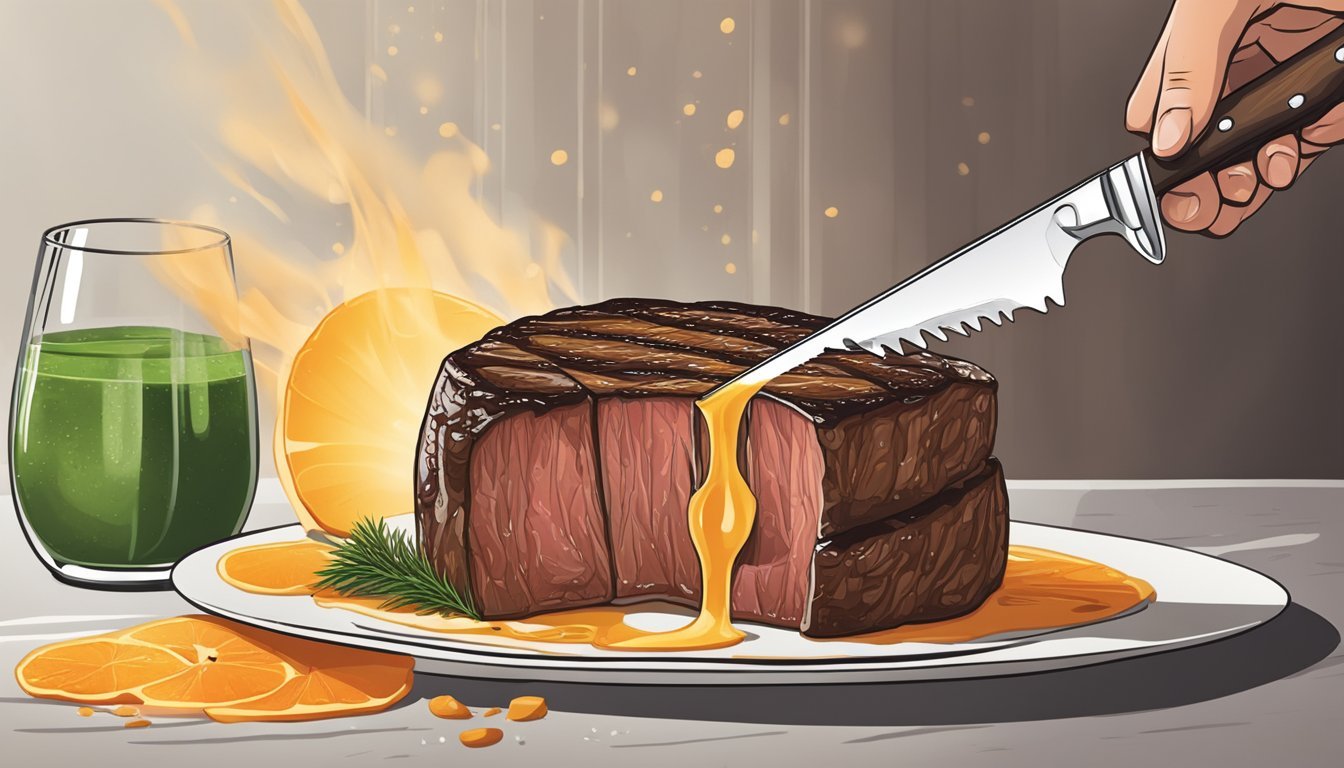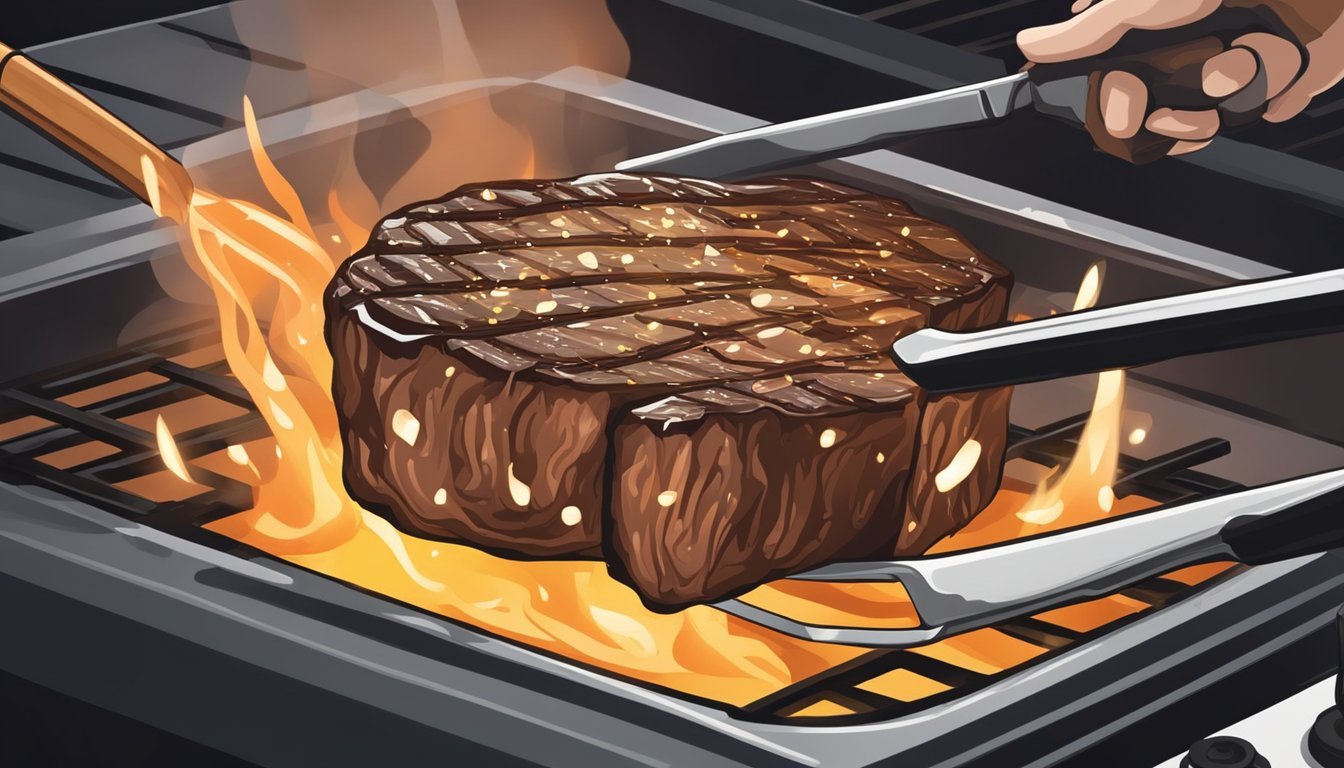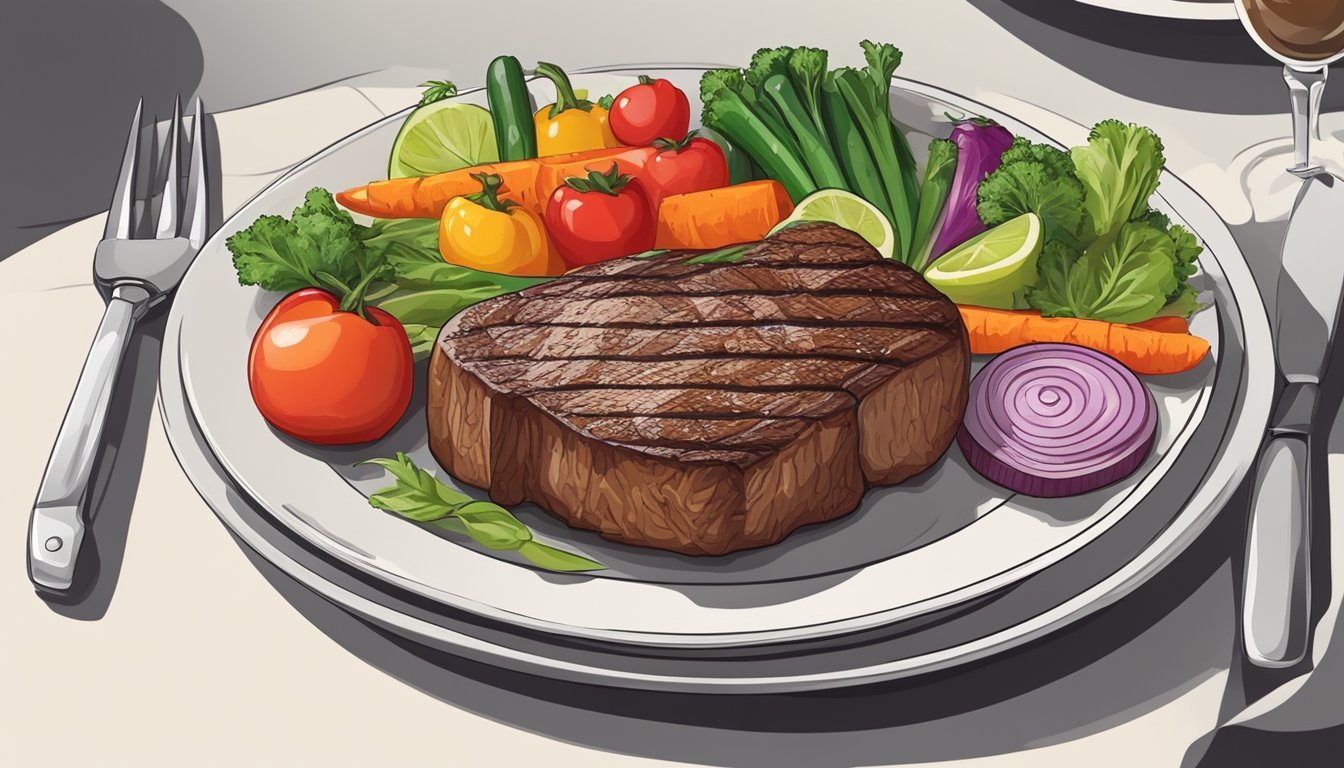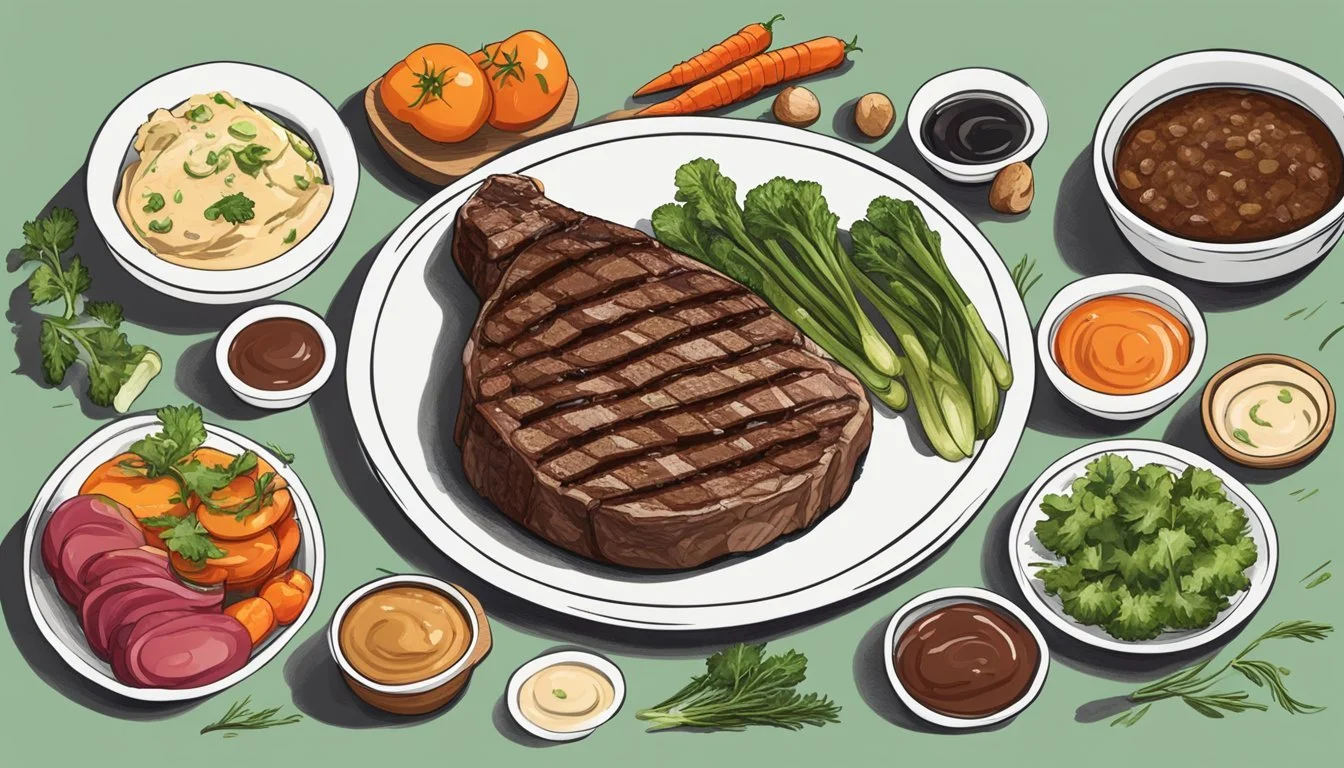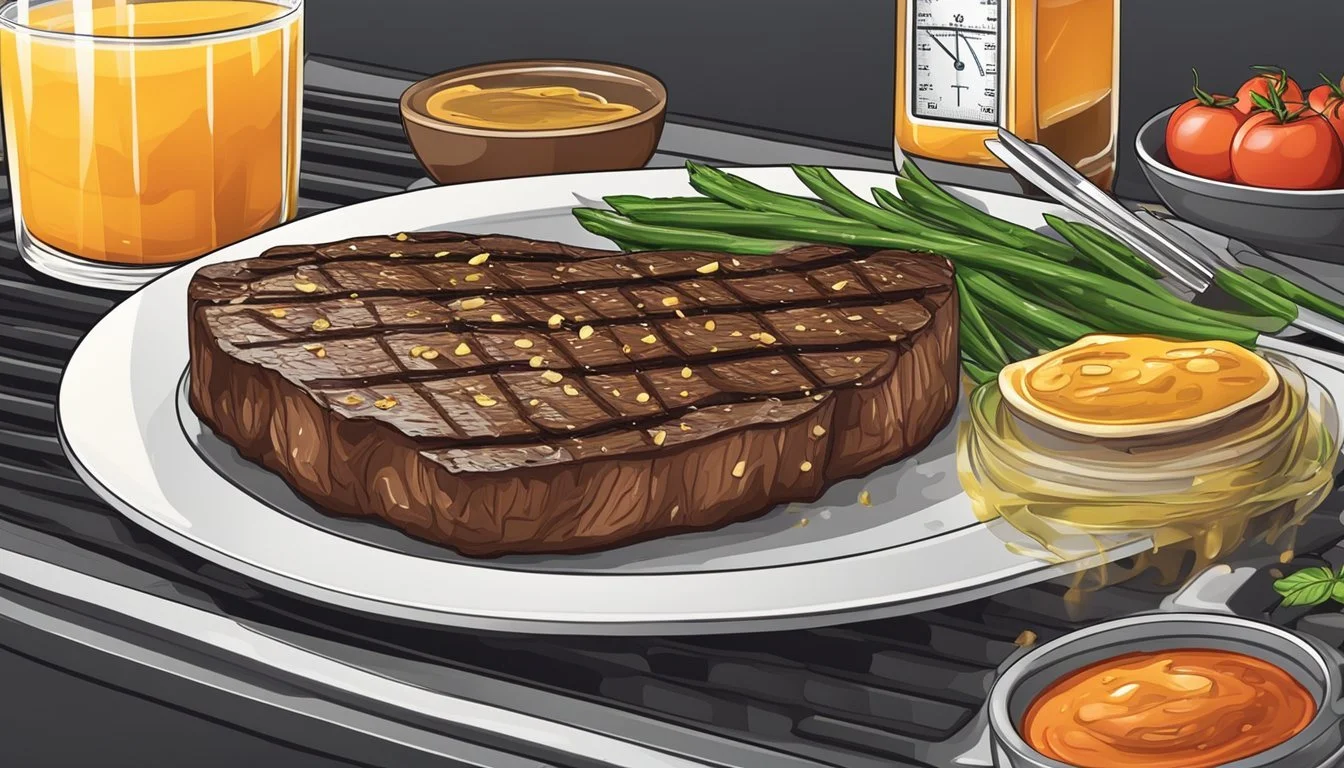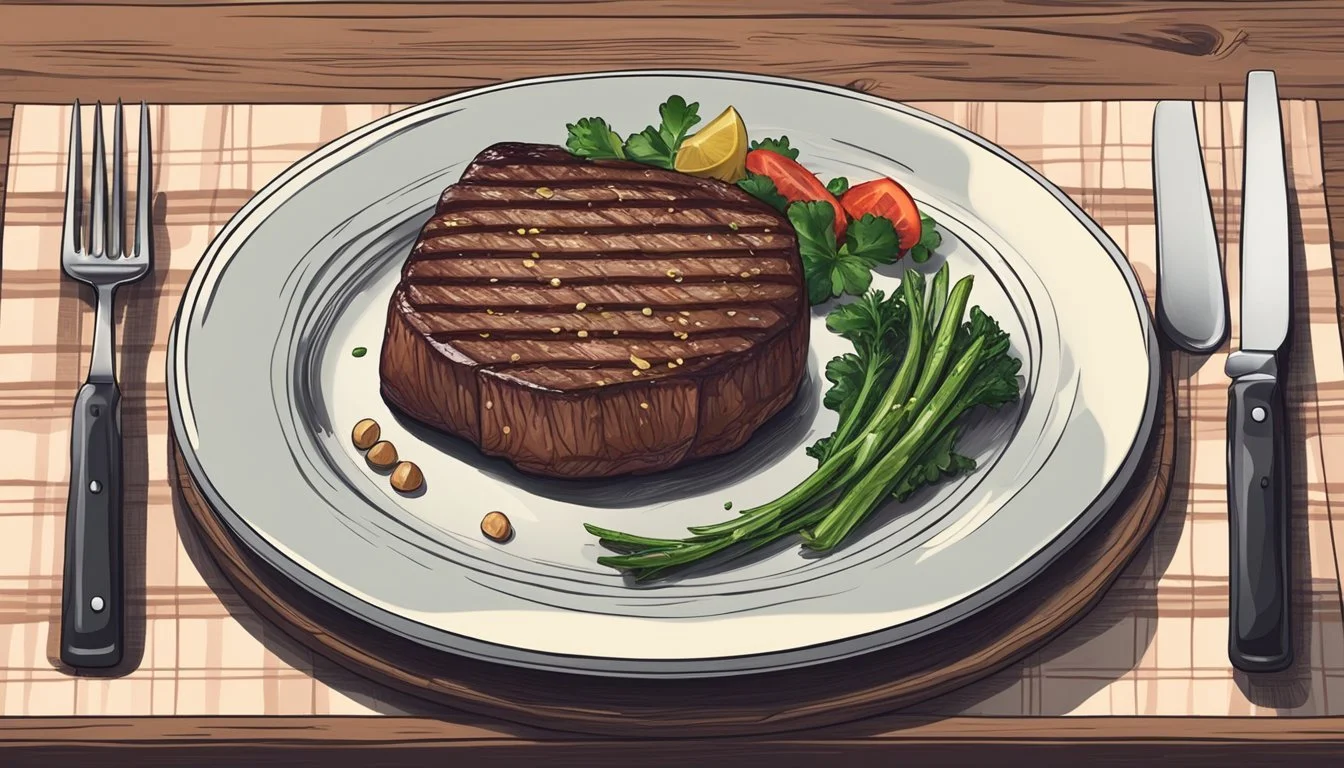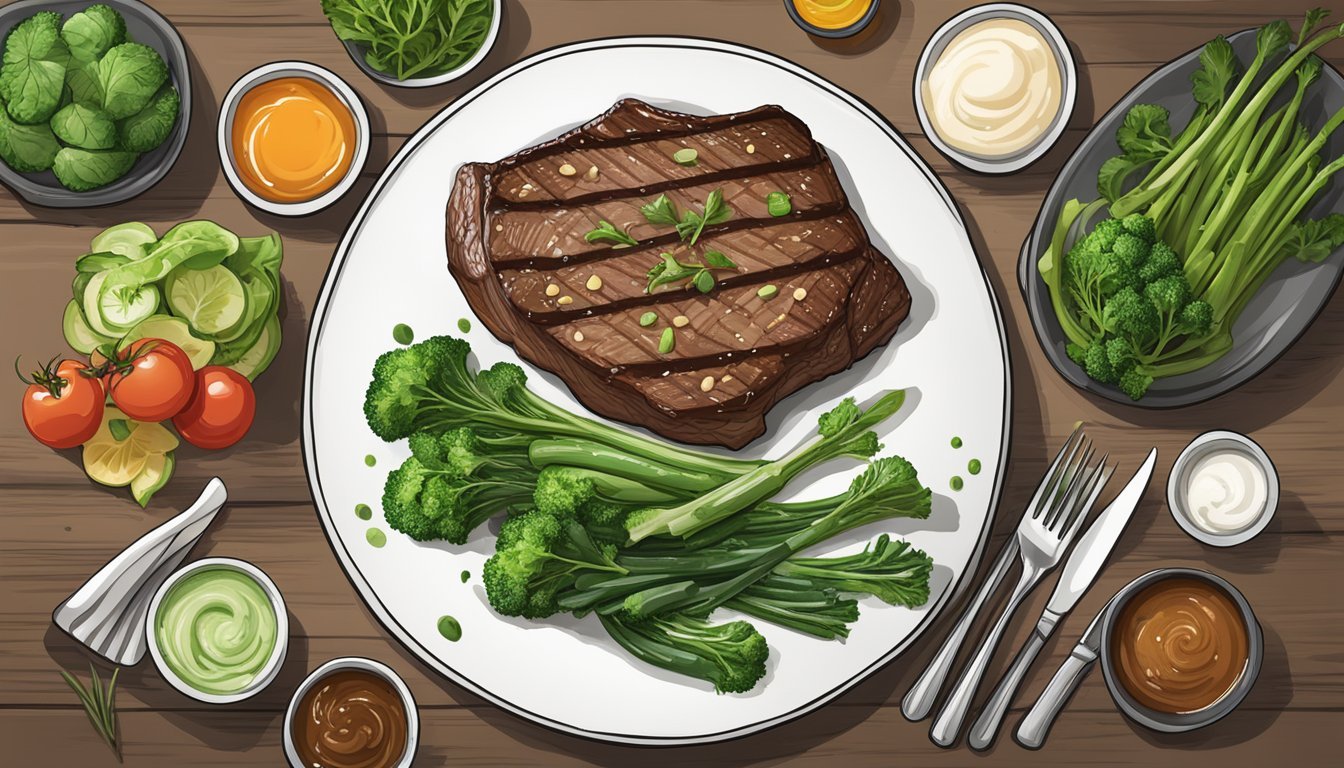How do you eat a steak?
Mastering the Art of Savory Enjoyment
Eating a steak offers a culinary experience that can be as nuanced as enjoying a fine wine. The enjoyment of a steak extends beyond merely cooking it to the preferred degree of doneness; how one eats it can make a significant difference in the appreciation of its flavor and texture. The cut of meat chosen, from a tender filet to a marbled ribeye, lays the foundation for a meal that can be customized to individual tastes.
To attain the perfect steak experience, one must pay attention to the cooking method which directly affects the juiciness and tenderness of the meat. Grilling has long been a favored technique for cooking steak, giving it a distinctive char and smoky flavor that is hard to replicate with other cooking methods. However, achieving a tender and juicy steak requires careful attention to heat and timing, as well as proper resting after it’s taken off the heat.
When it's time to eat, the method of cutting into the steak is critical. Slicing against the grain ensures that the muscle fibers are shortened, making the steak easier to chew and more enjoyable to eat. These small but significant steps collectively contribute to the ultimate enjoyment and culinary satisfaction that comes from eating a well-prepared steak.
Selecting the Right Cut
Selecting the right cut of steak is crucial for a satisfying dining experience. It involves understanding meat quality, including factors like marbling, and being familiar with different types of steak cuts.
Understanding Meat Quality
Marbling refers to the white flecks of intramuscular fat distributed within the muscle of the meat. The presence of marbling is a key quality indicator; it enhances both flavor and tenderness. Steaks are often graded by their marbling, with "Choice" or "Prime" being high-quality indicators.
Tenderness varies among cuts due to the amount of muscle usage. Less-used muscles like the tenderloin are more tender, while heavily worked muscles are tougher. A cut's position on the animal can offer clues about its tenderness.
Types of Steak
Ribeye: Known for its rich, beefy flavor due to high marbling. It can be found either bone-in or boneless.
Filet Mignon (Tenderloin): The most tender cut, offering a soft texture with less fat content. It's also known as the tenderloin steak.
Porterhouse: A larger steak combining the flavorful New York strip and a portion of the tenderloin, separated by a T-shaped bone.
New York Strip: Less marbled than the ribeye but still tender and flavorful. Best cooked to medium-rare or medium.
Sirloin (Top Sirloin): Offers a good balance between flavor and tenderness, often at a more affordable price point compared to other premium cuts.
Top Sirloin: Another sirloin variant that's leaner than a porterhouse or ribeye but still full of flavor.
Each cut offers a unique experience and should be selected based on personal taste preferences and desired balance of tenderness, flavor, and marbling.
Preparation Before Cooking
Proper steak preparation is integral to achieving the ideal flavor and texture in the final dish. Not only does this involve careful seasoning, but also bringing the steak to room temperature to ensure even cooking.
Seasoning Your Steak
The chef begins by laying the foundation of taste with seasoning. A liberal application of salt and freshly ground black pepper is essential. One should apply these seasonings on both sides of the steak, which helps to build a flavorful crust during cooking. While olive oil can be used to create a thin coating, it’s not mandatory; its main purpose is to ensure the seasonings adhere well to the steak. For those inclined towards a more aromatic profile, garlic, rosemary, or thyme can be introduced as part of the rub or during the cooking process for added depth.
Bringing to Room Temperature
Before heating up the pan or grill, steaks benefit from resting at room temperature for approximately 30 to 45 minutes. This step is crucial as it allows the steak to cook more evenly, avoiding the dreaded cold center. A steak taken straight from the refrigerator will not cook as uniformly, potentially leading to undercooking in the middle and overcooking at the edges.
Cooking Techniques
Selecting the right cooking technique allows one to achieve the desired texture and flavor in a steak. Mastery of heat and timing is crucial across different methods.
Grilling
When one grills a steak, they typically use a barbecue or a grill pan over direct high heat. To ensure even cooking, one should allow the meat to sear on one side and then flip it to the other side. Indirect heat can be used after searing to cook the steak to the desired doneness without burning the exterior.
Pan-Searing
Using a cast-iron skillet on a stove enables a chef to sear steaks at high heat. After seasoning, the steak is placed in the hot skillet to develop a crust on each side. Following the sear, the heat can be reduced to cook the steak through to the preferred level.
Broiling
Broiling a steak involves cooking it with high heat from above, typically in an oven. This technique simulates grilling, but it offers more control over the cooking process, preventing the meat from being overexposed to heat.
Oven Cooking
Steaks may be started on the stove in a skillet and then transferred to an oven to finish cooking. The skillet is first heated to a high temperature to sear the steak, then it's moved to a preheated oven where it continues cooking at a more moderate temperature, allowing a gradual rise to the desired internal temperature.
Reaching the Perfect Doneness
Achieving the ideal doneness for a steak is a precision task that hinges on two key factors: understanding temperature guidelines and the effective use of a meat thermometer.
Temperature Guidelines
The desired doneness of a steak is typically defined by its internal temperature, which can be measured using a meat thermometer. Below is a table of temperature guidelines for various levels of doneness:
Doneness Temperature Rare 120°F - 130°F Medium Rare 130°F - 135°F Medium 135°F - 145°F Medium Well 150°F - 155°F Well Done 160°F and above
Rare steaks are often cool to warm in the center, bright red, and moist. Medium rare is warm, with a reddish-pink center, offering a tender and juicy bite. A medium steak has a warm, pink center, providing a balance between tenderness and firmness. Medium well steaks have only a slight hint of pink and are firmer to the bite. A well-done steak has no pink, can be tougher and drier due to a longer cooking time.
Using a Meat Thermometer
One should utilize a meat thermometer to ensure accuracy in reaching the desired doneness. To properly use a meat thermometer, insert the probe into the thickest part of the steak, avoiding contact with fat or bone. Here are some tips for using a meat thermometer:
Use an instant-read thermometer for quick results.
Insert the probe into the side of the steak, reaching roughly the center for an accurate reading.
Remember that the steak will continue cooking ("carryover cooking") after it has been removed from the heat source, and thus, it's advisable to remove the steak from heat a few degrees before it reaches the target temperature.
Resting and Serving
After cooking, proper resting and presentation are crucial to ensure a steak is both visually appealing and at its peak taste and texture.
The Importance of Resting
Resting a steak before serving is vital to its final taste and texture. One should allow the steak to cool to a temperature where the muscle fibers can reabsorb the juices, typically around 120°F to 125°F. The rest period allows the steak to continue cooking slightly from residual heat, and the juices redistribute, making the meat more tender and juicy. The length of resting time can vary:
For smaller steaks (up to 8 ounces): Rest for 5 minutes.
For larger steaks (over 8 ounces): Rest for up to 10 minutes or 1 minute for every 100 grams.
It's preferable to rest the steak on a warm surface to minimize heat loss. Some opt to cover the steak loosely with foil, while others argue that covering is not necessary and can lead to a slight steaming effect, potentially affecting the desired steak crust.
Slicing and Presentation
Before cutting into a steak, ensure that it has properly rested. When it's time to slice:
Use a sharp knife: This will create clean cuts without tearing the fibers.
Cut against the grain: Identify the direction of the muscle fibers and slice perpendicular to them for the most tender eating experience.
How the steak is presented is the diner's first impression of the meal. Serve the steak on a pre-warmed plate to keep it at the ideal temperature. The steak can be presented whole or pre-sliced, depending on personal preference. If sliced, the cuts can be fanned on the board or plate to demonstrate the done-ness and to entice with the juicy cross-section.
Accompaniments and Sauces
When one enjoys a steak, selecting the right sauces and side dishes can transform the meal entirely. A sauce should complement the flavor of the steak, and side dishes should balance the meal without overshadowing the main attraction.
Selecting Sauces
For sauces, simplicity can lead to perfection. A classic choice is butter, which when melted on top of a freshly grilled steak, adds a rich, luxurious finish. Béarnaise is another sophisticated sauce, with its creamy texture and subtle hint of tarragon and acid from the vinegar, it pairs excellently with red meat. Sauces to consider include:
Béarnaise Sauce: Combines egg yolk, butter, white wine vinegar, tarragon.
Caramelized Onion Sauce: Offers a sweet yet savory flavor profile.
Mango BBQ Sauce: A sweet and tangy choice, perfect for adding a fruity zest.
Side Dishes
To complement the main course, side dishes serve as an enhancement to a steak's flavor profile without overwhelming it. A fresh salad dressed with a light vinaigrette brings a welcome freshness and acidity to the plate. Potatoes, whether mashed or roasted, are a hearty and traditional pairing, especially when cooked with seasonings like garlic, rosemary, and thyme. Other sides might include:
Vegetables: Grilled asparagus (What wine goes well with grilled asparagus?), sautéed mushrooms, or creamed spinach.
Starches: Fondant potatoes, a classic baked potato, or savory bread pudding.
Pastries: A small, flaky pot pie filled with vegetables can offer a delightful contrast in textures.
Advanced Steak Cooking Tips
In the quest for the perfect steak, achieving a superior sear and understanding the intricacies of aging and marbling are fundamental. These techniques profoundly affect flavor and texture.
Mastering the Sear
Key to Searing: A sear creates the much-desired crust, enhancing texture and flavor. The process requires high heat and a reliable pan, preferably cast iron. Here's how to achieve it:
Preheat the Pan: Ensure the pan is hot before the steak touches its surface, aiming for a temperature that instantly singes the meat.
Dry the Steak: Moisture is the enemy of a good sear; pat the steak dry before it meets the pan.
Avoid Overcrowding: Cook one steak at a time to allow ample space and consistent heat, preventing steam and promoting an even crust.
Turn Steaks Properly: Use tongs to flip the steak, searing each side once, until a brown crust forms—this usually takes 2-3 minutes per side.
Understanding Aging and Marbling
Aging and Fat Content: Aging enhances flavor and tenderness, while marbling, the internal distribution of fat, contributes to juiciness and richness.
Aged Steaks: They are known for their depth of flavor. Dry aging allows enzymes to tenderize the meat, intensifying taste over time.
Assessing Marbling: Look for small, even flecks of white fat within the muscle, signaling quality marbling which melts during cooking, enriching the steak's flavor and moistness.
Herbs for Flavor: Introduce aromatics such as rosemary during the cooking process to infuse the steak, complementing the natural savoriness imbued by fat and aging.
Steakhouse Secrets
Steakhouse enthusiasts often wonder how their favorite restaurants consistently serve up the best steak on the plate. The secret lies not only in the cooking techniques of seasoned chefs but also in the meticulous selection of meat from trusted butchers.
Buying from Butchers
Butchers play a crucial role in providing high-quality meat to steakhouses. They often offer a wide range of cuts, focusing on the marbling and age of the meat which are key factors in flavor and tenderness. Steakhouse managers select their meat with a careful eye, ensuring that they procure only the best cuts that align with their restaurant's standards. By building a good relationship with a reputable butcher, steakhouses assure a consistent supply of premium meat for their patrons.
Selecting Meat:
Look for good marbling and a bright red color.
Consider the cut appropriate for the desired recipe.
Learning from Chefs
Chefs at top steakhouses know that the perfect steak begins with the basics, from the temperature of the meat to the searing technique used. They utilize techniques such as letting the steak come to room temperature before cooking, searing each side for precise times depending on the desired doneness, and allowing the meat to rest after cooking to redistribute its juices.
Key Chef Techniques:
Sear evenly on both sides: A 2-cm thick steak may need approximately 2 minutes per side for medium-rare.
Baste with butter, rosemary, and garlic to add moisture and flavor.
These underlying factors—a discerning selection process from experienced butchers and the chef's meticulous cooking method—are what make a steakhouse's offering stand out from the home-grilled experience.
Health and Nutritional Aspects
When considering the health and nutritional aspects of eating steak, it is essential to look at both the type of cut one opts for and the robust nutritional profile it offers. The leaner the cut, the lower the fat content, while the nutritional benefits of steak, such as its protein content, can play an essential role in a balanced diet.
Lean Cuts for Healthier Choices
Lean cuts of beef, such as sirloin, tenderloin, or filet mignon, are healthier choices for those looking to minimize fat intake. A New York strip steak offers a good balance between leanness and flavor, making it a popular choice for health-conscious diners. Porterhouse cuts, however, tend to have more fat, which should be considered when aiming for a leaner diet. The USDA defines extra-lean meat as having less than 5 grams of total fat and 2 grams of saturated fat per serving; choices that meet these criteria are beneficial for maintaining lower cholesterol levels.
Nutritional Benefits of Steak
Steak is a powerhouse of nutrition, providing a significant amount of protein to support muscle growth and repair. A 3-ounce serving of grilled beef tenderloin (What wine goes well with beef tenderloin?) contains approximately 179 calories and 7.6 grams of fat while providing 60 mg of sodium and 0 grams of carbohydrates.
Nutrient Amount per 3-ounce serving Calories 179 Fat 7.6g Sodium 60mg Carbohydrates 0g Protein Varies (20-25g on average)
Steak also contributes valuable vitamins, including the complete B-vitamin family, which are crucial for energy production and brain health. With zero carbohydrates and sugars, steak is a low-carb option suitable for many diets.
Mistakes to Avoid
When eating steak, the diner's enjoyment largely hinges on the preparation of the meat. Two common errors can detract from the pleasure of a well-cooked steak: overcooking and insufficient resting.
Overcooking Your Steak
A steak should be cooked to the desired level of doneness, and not a degree further, to ensure it retains its flavor and juiciness. The optimal temperatures for doneness are:
Rare: 120-130°F
Medium Rare: 130-135°F
Medium: 135-145°F
Medium Well: 145-155°F
Well Done: 155-165°F
Overcooking can happen quickly, especially with steaks that are less than one inch thick. Always use a meat thermometer to check the temperature, aiming for a few degrees below the targeted doneness since the steak will continue to cook slightly after being removed from the heat source.
Neglecting the Rest Period
Once the steak is cooked, it must rest before being cut into. This allows the juices, which have been driven to the center of the steak by the heat, to redistribute throughout the meat. Resting results in a juicier and more flavorful steak. The general rule is to let the steak rest for about five minutes per inch of thickness. For example:
1 inch thick: Rest for 5 minutes
1.5 inches thick: Rest for 7-10 minutes
Skipping this crucial step often leads to a pool of juices on the plate, implying that the moisture has been lost from the steak itself, making it dryer and less enjoyable.
Cleaning and Maintenance
Proper post-cooking clean-up and routine equipment maintenance are crucial in ensuring both the longevity of cookware and the safety of food preparation in the kitchen. Specific attention to these aspects assures that residue or bacteria do not contaminate future meals.
Post-Cooking Clean-Up
After enjoying a steak, the cook should promptly address clean-up to prevent the hardening of grease and food particles. They should start by allowing the pan to cool slightly, then use a paper towel to carefully wipe away excess oil and food residues. For stuck-on food, they might fill the pan with water and bring it to a gentle simmer, using a wooden spoon to dislodge food bits—a technique often referred to as deglazing.
For Cast Iron Pans:
Wipe out the excess grease while the pan is still warm.
Avoid soapy water as it can strip the seasoning.
Use coarse sea salt for scrubbing if necessary.
Dry thoroughly and apply a light coat of oil to protect the surface.
For Stainless Steel or Non-Stick Pans:
Soak in warm soapy water to loosen any stuck particles.
Use a non-abrasive sponge or brush to scrub the pan clean.
Rinse thoroughly with water and dry with a clean towel or paper towel.
Maintaining Your Equipment
Regular maintenance of kitchen equipment ensures functionality and hygiene. Knives should be honed before each use and sharpened as needed to keep them in optimal cutting condition. Cookware should be inspected for signs of wear, such as scratches in non-stick surfaces or warping in metal pans. Wooden utensils often benefit from an occasional oiling to prevent drying and cracking.
Honing with a steel rod realigns the blade's edge.
Sharpening on a stone or with a professional service maintains edge sharpness.
Cookware Care:
Inspect regularly for wear and tear; replace if compromise is found.
For gas stove users, checking the flame color is vital: a blue flame indicates efficient combustion, whereas yellow or orange flames suggest burner cleaning or adjustment may be needed.
Exploring Local and International Steak Varieties
Around the world, steak is enjoyed in many forms. Each cut offers a unique flavor and texture profile. The New York strip, ribeye, and fillet are among the most renowned for their distinctive characteristics.
Steak Across Different Cultures
In the United States, steak is a key part of culinary culture with regional specialities offering a diverse range. A quintessential example is the New York Strip Steak, known for its fine texture and rich flavor. It is a cut from the short loin of the cow and prized for its balance of tenderness and flavor.
Moving toward a more marbled option, the Ribeye is celebrated for its intense taste due to the generous fat marbling that renders out during cooking. This can be found on almost any steakhouse menu across the globe, often by different names like Entrecôte or Scotch Fillet. It can come bone-in or boneless, and its rich flavor can be attributed to the amount of marbling.
In terms of tenderness, the fillet, also known as filet mignon, sits at the pinnacle. Cut from the smaller end of the tenderloin, this portion of the cow is not weight-bearing, thus it contains less connective tissue, making it exceptionally tender. The fillet often commands a higher price and suits those who favor texture over the robustness of flavor that other cuts, like the ribeye, provide.
Across the Atlantic, European countries like France have their own distinctive take on steak. A French twist is the Steak au Poivre, a fillet or strip generously coated in cracked peppercorns and pan-seared. The French also favor bistro classics such as entrecôte steak, similar to the ribeye, traditionally served with frites.
In South America, particularly Argentina and Brazil, steak holds a significant cultural status. The South American "chop" often refers to thicker cuts, such as picanha, which is rich in flavor and often seasoned simply with salt and grilled over open flames, highlighting the meat's natural flavors.
No matter the country or culture, steak enthusiasts take pride in the sourcing, preparation, and cooking of these beloved cuts, celebrating the distinct flavors and textures that make steak a global favorite.
Conclusion
Enjoying a steak to its fullest often comes down to personal preference and mastering the technique of cooking. Whether one's ideal doneness is a succulent medium rare or a more thoroughly cooked well-done, the key is in the preparation. A perfect steak is as much about the cooking method as it is about the final few moments at the table.
For many, a medium rare steak hits the sweet spot of warmth and tenderness, highlighting the flavors without compromising on texture. Achieving this ideal level of doneness involves a balanced combination of heat control and timing.
When it comes to cuts like tenderloin, which is prized for its softness, less is more. Overcooking can diminish its inherent quality, turning a potentially magnificent meal into an average experience. Respect for the product and attentiveness during cooking steak are hallmarks of successful steak preparation.
Here's a quick guide to doneness:
Doneness Temperature range Rare 120-130°F (49-54°C) Medium Rare 130-135°F (54-57°C) Medium 140-145°F (60-63°C) Medium Well 150-155°F (65-68°C) Well Done 160°F and above (71°C+)
In conclusion, the journey to the perfect steak is both an art and a science, requiring finesse with cooking techniques and a clear understanding of one's personal taste. The right level of doneness, a precise cut, and proper preparation techniques come together to culminate in the ultimate steak experience. Enjoyment comes from each of these elements working in harmony, resulting in a dish that is as delightful as it is personal.

